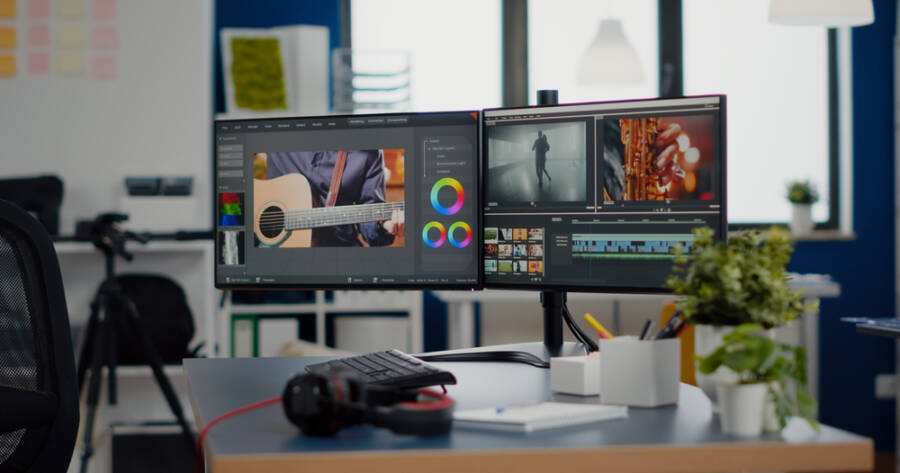Creative professionals need tools that foster innovation, streamline workflow, and keep up with evolving technology. A modern creative toolkit is not just about having the right software or hardware but also about combining tools that allow for flexibility, collaboration, and high-quality output. Explore the essential components of a creative toolkit that support both individual and collaborative creativity.
Design Software: The Core of Creative Work
For any creative professional, design software is at the heart of their work. Whether you’re a graphic designer, photographer, or illustrator, having the right design tools is crucial for bringing ideas to life. As of 2025, industry-leading software like Adobe Creative Cloud remains a staple, offering a comprehensive suite for everything from photo editing to 3D modeling. However, newer, more specialized options have emerged, such as Affinity Suite for vector and raster graphics, or Procreate for digital painting on tablets.
These programs provide powerful features that allow professionals to execute their vision with precision and flexibility. Alongside traditional desktop software, cloud-based tools are becoming more popular due to their ability to enable remote collaboration and access from anywhere. With an increased emphasis on cloud storage and real-time editing, creatives can now work from virtually any device, ensuring seamless integration between tools and a smoother workflow.
Hardware: A Strong Foundation for Productivity
The importance of robust hardware cannot be understated. In 2025, creative professionals need devices that combine power and portability. High-performance laptops like the MacBook Pro or Microsoft Surface Studio are favorites, thanks to their processing power and display quality. Additionally, tablets like the iPad Pro, combined with a stylus, offer greater flexibility for sketching, note-taking, and editing on the go.
Other essential hardware includes monitors with color accuracy for designers and photographers, ergonomic keyboards for long hours of work, and noise-cancelling headphones to maintain focus. As creative tasks grow more complex, having the right hardware ensures that software runs smoothly, preventing interruptions that can affect productivity and creativity. It’s also essential to include a reliable external hard drive or cloud storage for backing up projects, ensuring data safety and easy access across different devices.
AI Tools and Automation: Enhancing Creativity with Technology
Artificial intelligence has made significant strides, offering a range of tools that enhance creative output in 2025. AI-driven software can streamline time-consuming tasks like editing photos or creating layouts, freeing up time for more creative decision-making. Tools such as Adobe Sensei, which use machine learning to automate repetitive tasks, allow for quick adjustments to content, from color corrections to retouching images.
Moreover, AI tools like Jasper or Copy.ai assist with content creation, making them valuable for copywriters and content marketers. These tools can help generate creative text, brainstorm ideas, or suggest improvements. As AI continues to evolve, its role in the creative industry will expand, offering even more ways to automate tasks and optimize workflows while maintaining a human touch.
Collaboration Tools: Working Together Across Boundaries
In today’s interconnected world, collaboration is key. Creative professionals often work in teams, whether for design projects, marketing campaigns, or film production. Collaboration tools like Slack, Microsoft Teams, and Asana are invaluable for streamlining communication, task management, and project organization. They allow teams to stay in sync, share files easily, and discuss ideas, no matter where they’re located.
Another important addition to the modern toolkit is collaborative cloud storage options like Google Drive or Dropbox, which enable teams to access and edit shared files in real time. These platforms promote efficiency, ensuring that everyone involved in a project has access to the most current versions of files, reducing confusion and ensuring timely delivery of creative work.
Mobile Apps: Creativity On the Go
In 2025, mobile apps have become an essential part of any creative toolkit. Designers and artists now use apps that enhance their work from anywhere, making it easier to stay productive while traveling or away from the desk. For example, Adobe Fresco and Canva are popular for creating graphics, while LumaFusion offers video editing capabilities on mobile devices.
Additionally, creative professionals are turning to productivity apps like Notion and Evernote to organize ideas and brainstorm while away from their main workstations. These apps allow users to capture inspiration on the go, helping them stay productive and connected to their projects no matter where they are. Mobile technology has truly revolutionized how creatives approach their work, providing flexibility and freedom without sacrificing quality.
Building the Right Toolkit for the Future
As the creative industry evolves, so does the toolkit needed to succeed. The best creative professionals in 2025 will use a combination of advanced software, powerful hardware, AI tools, and collaborative platforms to push the boundaries of their craft.
It’s not just about the latest gadgets or programs; it’s about finding the right tools that support creativity, collaboration, and efficiency.

